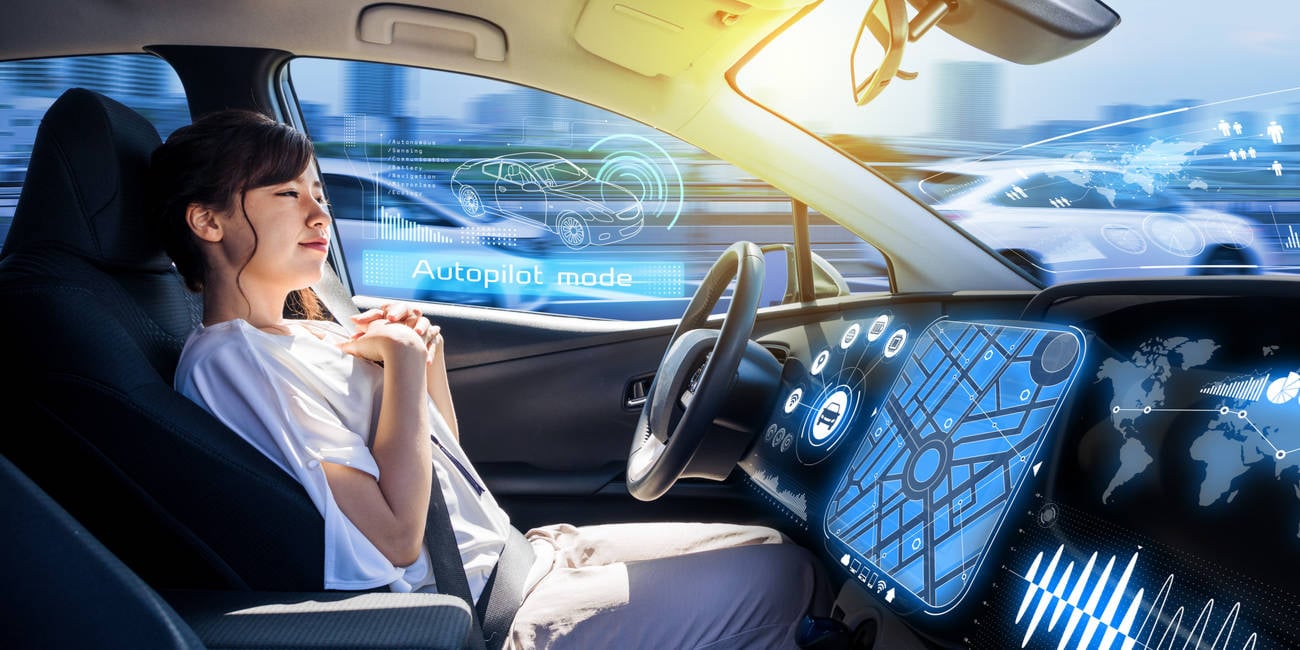Samsung's Latest Spin On ISOCELL Shifts Camera Tech From Smartphones Into Autonomous Vehicles

Samsung's ISOCELL imaging sensor line-up is making a shift into the automotive industry as the company pledges to expand into autonomous vehicles and in-cabin camera systems.
ISOCELL was launched in 2013 as the hot new thing for smartphones and tablets: a camera sensor with "isolated cells," offering a claimed boost in colour fidelity in low-light conditions, a higher dynamic range, and a thinner package.
Since then the company has been refining the ISOCELL line-up with slimmer models, high-resolution models, and as of last month a version with the smallest pixels around. Always, though, with an eye on the smartphone and tablet markets.
Its latest ISOCELL, however, is the first to target the automotive industry – and heralds a planned expansion of the company's vehicular sensor range.
"The new ISOCELL Auto 4AC combines Samsung's innovative and market-proven image sensor technologies with a unique CornerPixel solution for advanced HDR [High Dynamic Range] and LFM [LED Flicker Mitigation capabilities, offering exceptional viewing experiences regardless of lighting conditions" claimed Duckhyun Chang, exec veep for Samsung's sensor business.
- Samsung brags that its latest imaging sensor has the ittiest-bittiest cam pixels in the world
- Samsung shows off next-generation big-pixel camera sensor tech, coming to an Android phone near you
- Samsung shaves 0.1μm off pixels to make new ISOCELL sensor lineup 15% slimmer
- Samsung's new image sensor promises better snaps in smaller devices
"Starting with the ISOCELL Auto 4AC, we plan to expand our automotive sensor line-up to areas such as camera monitor systems (CMS), autonomous driving, and in-cabin monitoring."
Samsung claims the automotive-specific ISOCELL Auto 4C offers "a safer driving experience" than rival sensors currently used in surround-view or rear-view installations, thanks to an enhanced field of view. The key new feature, though, is CornerCell: placing two photodiodes in a single pixel area, one 3µm for low-light conditions and one 1µm for brighter environments.
The two photodiodes work side-by-side, capturing images in two exposures simultaneously to offer 120dB high dynamic range without the ghosting and blurring common to single-sensor HDR processing. It's also at the heart of the company's LED flicker reduction system, with the smaller photodiodes automatically adjusting their exposure time to eliminate LED flicker above 90Hz.
The new ISOCELL Auto 4AC is being sold as a 1/3.7-inch 1.2-megapixel sensor with onboard image signal processor (ISP), offering a 1280x960 resolution. Pricing has not been disclosed – and neither have details of the next prong in the company's planned assault on the autonomous driving market. ®
From Chip War To Cloud War: The Next Frontier In Global Tech Competition
The global chip war, characterized by intense competition among nations and corporations for supremacy in semiconductor ... Read more
The High Stakes Of Tech Regulation: Security Risks And Market Dynamics
The influence of tech giants in the global economy continues to grow, raising crucial questions about how to balance sec... Read more
The Tyranny Of Instagram Interiors: Why It's Time To Break Free From Algorithm-Driven Aesthetics
Instagram has become a dominant force in shaping interior design trends, offering a seemingly endless stream of inspirat... Read more
The Data Crunch In AI: Strategies For Sustainability
Exploring solutions to the imminent exhaustion of internet data for AI training.As the artificial intelligence (AI) indu... Read more
Google Abandons Four-Year Effort To Remove Cookies From Chrome Browser
After four years of dedicated effort, Google has decided to abandon its plan to remove third-party cookies from its Chro... Read more
LinkedIn Embraces AI And Gamification To Drive User Engagement And Revenue
In an effort to tackle slowing revenue growth and enhance user engagement, LinkedIn is turning to artificial intelligenc... Read more

